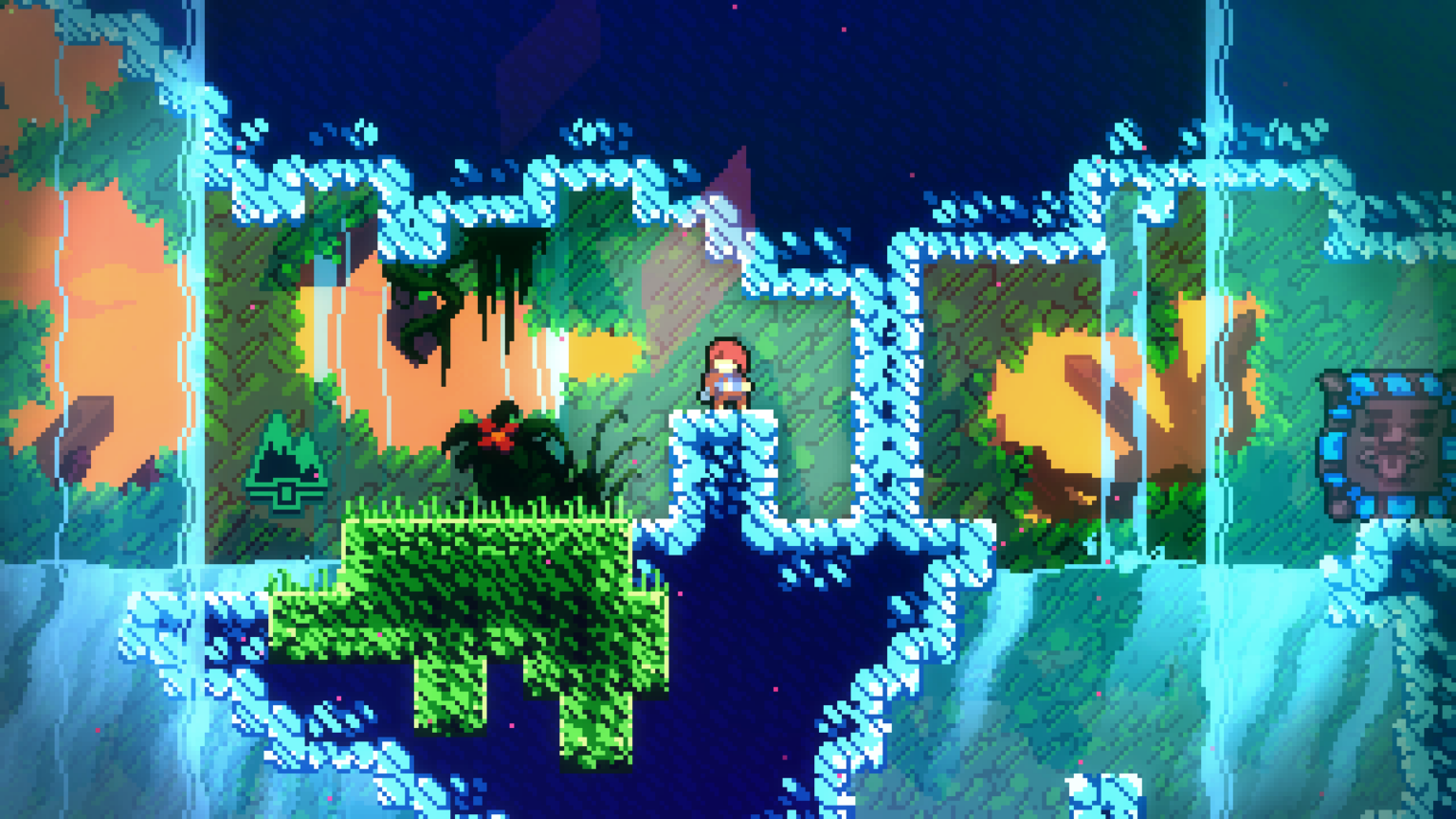Pixel art games hold a special charm that transcends technological eras. From the arcade boom of the 1980s to modern indie masterpieces, these games span PC, console, and mobile platforms and prove that 8-bit and 16-bit graphics can be timeless. In this ultimate list of the top 30 pixel art games, we’ve divided the titles by era – highlighting classics that defined genres, and newer hits that innovated with retro-style visuals. Each game earned its spot through massive popularity (downloads and sales), critical acclaim, influencer and community love, or historical influence on gaming. Grab your joystick (or controller) and get ready for a retro journey filled with iconic sprites, nostalgic chiptune soundtracks, and gameplay that stands the test of time.
1980s Pixel Art Game Classics (Arcade & 8-Bit Era)
The 1980s introduced the world to video games through simple pixel graphics and addictive gameplay. These retro classics became cultural phenomena and laid the groundwork for game design for decades to come:
Pac-Man (1980)
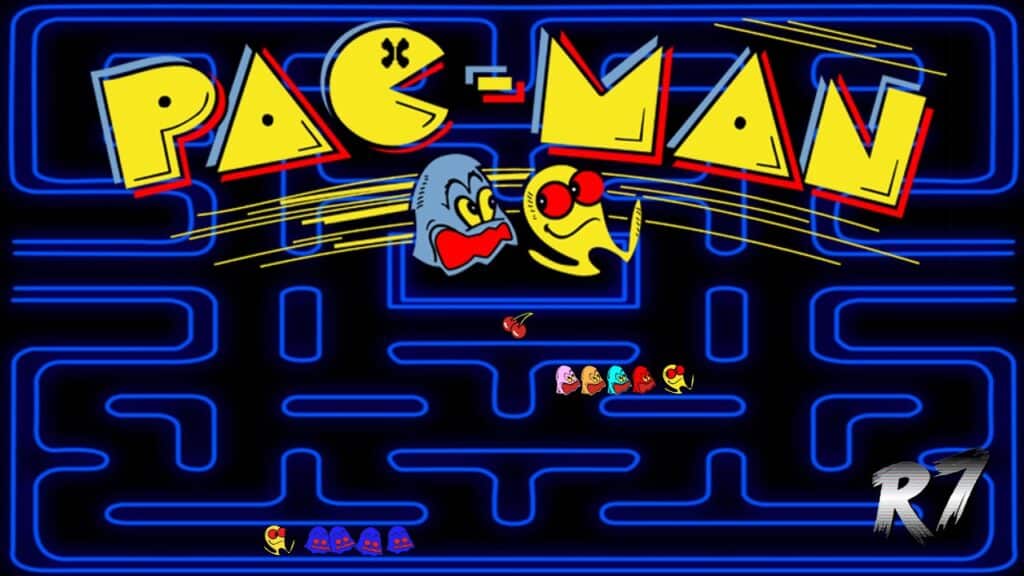
An arcade trailblazer and pop culture icon, Pac-Man dominated the early ’80s with its simple maze gameplay. It became the highest-grossing arcade game ever, reportedly earning over $3.5 billion by the 1990s . The character’s pizza-shaped design and catchy wakka-wakka sound epitomize the 8-bit era, and Pac-Man’s success proved that a simple pixelated character could spawn an entire franchise (and even a hit song).
Donkey Kong (1981)
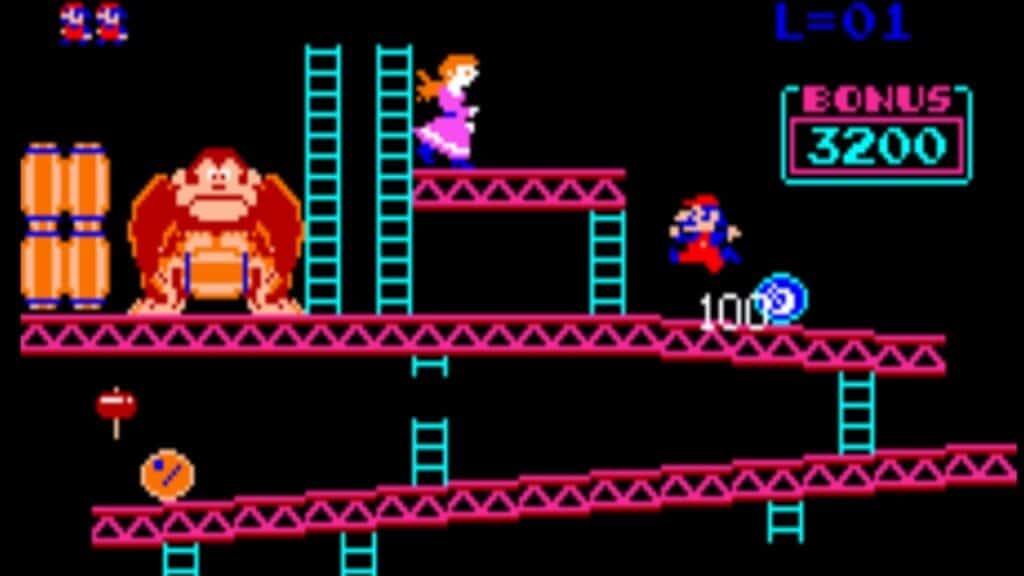
Nintendo’s breakout arcade hit that introduced the world to a character named Mario (then known as “Jumpman”) . Donkey Kong’s challenging barrel-dodging platform gameplay and charming pixel art characters were revolutionary at the time. This game’s success not only spawned the Donkey Kong series but also launched Mario, who would become the face of gaming. Its influence is seen in every platformer that followed, making it a must-include 8-bit classic.
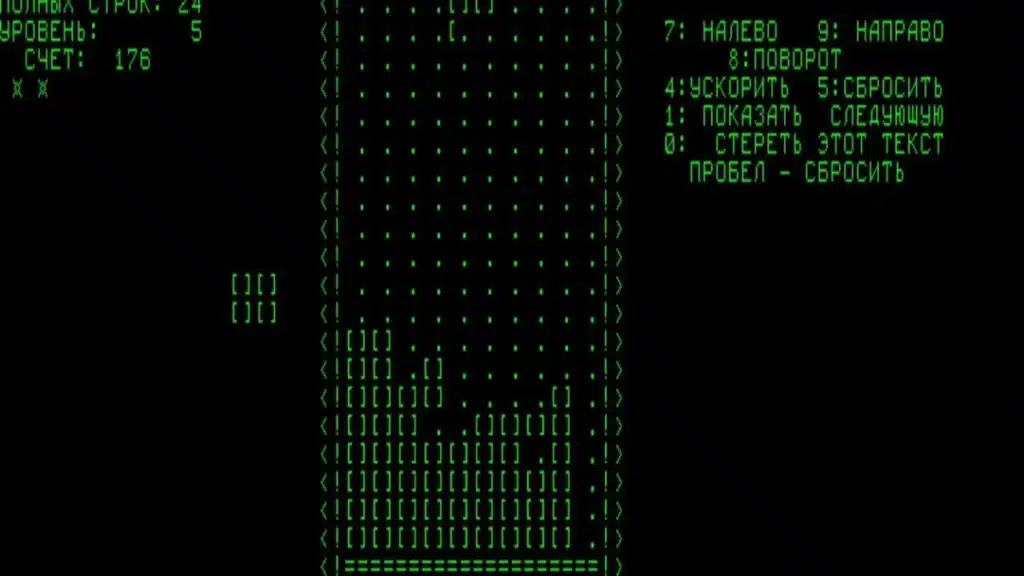
Tetris (1984)
Proof that addictive gameplay can trump graphics, Tetris used simple falling blocks (tetrominoes) to create one of the most addictive puzzle games of all time. Its pixel visuals are basic, but the endlessly replayable design led to over 100 million copies sold on mobile phones alone (the first game to hit that milestone) . Tetris was a pack-in title for the Game Boy in 1989, helping that handheld succeed, and its catchy chiptune theme is instantly recognizable. This Soviet-born puzzler’s legacy endures across arcades, consoles, mobile, and even on the side of buildings (as a real-life urban art display!).
Super Mario Bros. (1985)
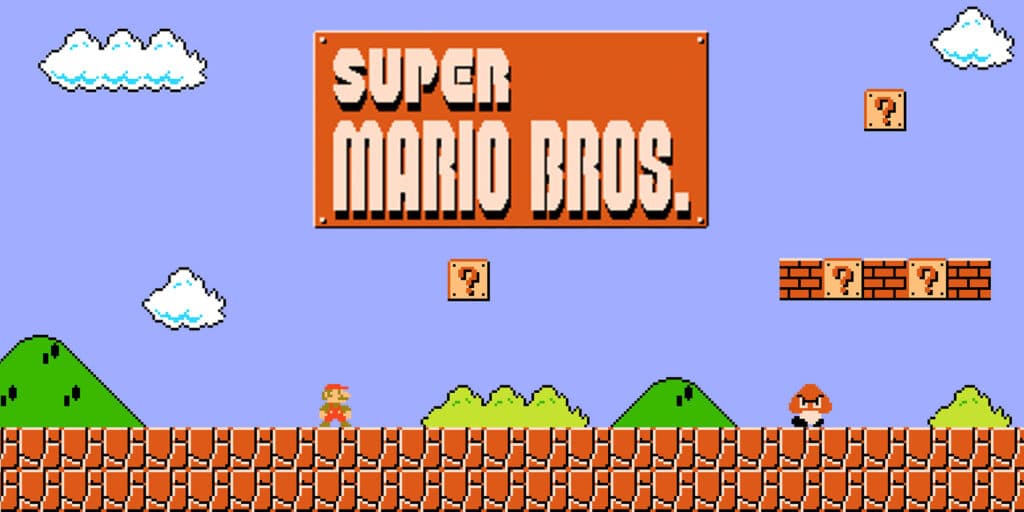
The quintessential side-scrolling platformer that put the Nintendo Entertainment System (NES) on the map. Players guided Mario through colorful pixel art worlds in the Mushroom Kingdom, and the game’s tight design set the standard for the genre. With over 40 million copies sold worldwide on the NES, Super Mario Bros. became one of the most successful video games ever. Its cheerful 8-bit sprites and iconic soundtrack defined ’80s gaming. Nearly every platform game since has drawn inspiration from Mario’s level design and power-up driven gameplay.
Metroid (1986)
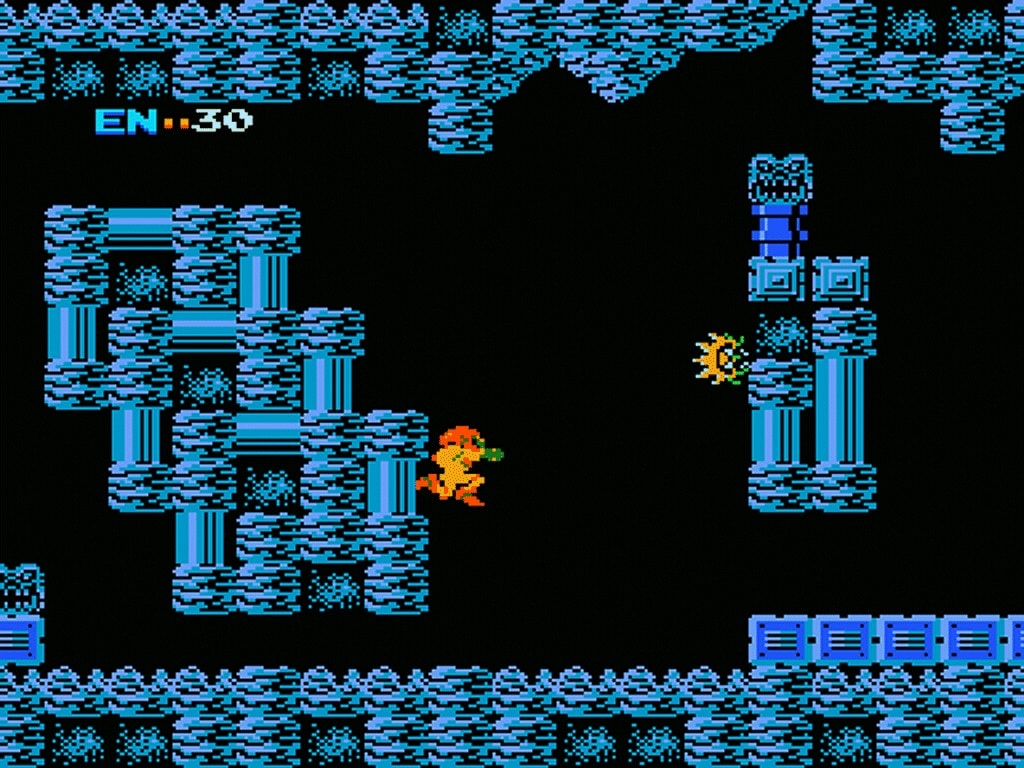
An atmospheric action-adventure that quietly birthed an entire genre. Metroid stood out for its open-ended exploration of planet Zebes, as players gathered power-ups to unlock new areas in a labyrinthine map. It was one of the first non-linear console games , encouraging backtracking in a way that later inspired the “Metroidvania” genre (a blend of Metroid’s exploration and Castlevania’s platforming). Samus Aran’s reveal as a female protagonist was groundbreaking, and the game’s eerie pixel art environments and moody chiptune music proved that 8-bit games could deliver deep, atmospheric experiences. Metroid’s influence lives on in countless indie exploration platformers today.
Mega Man 2 (1988)
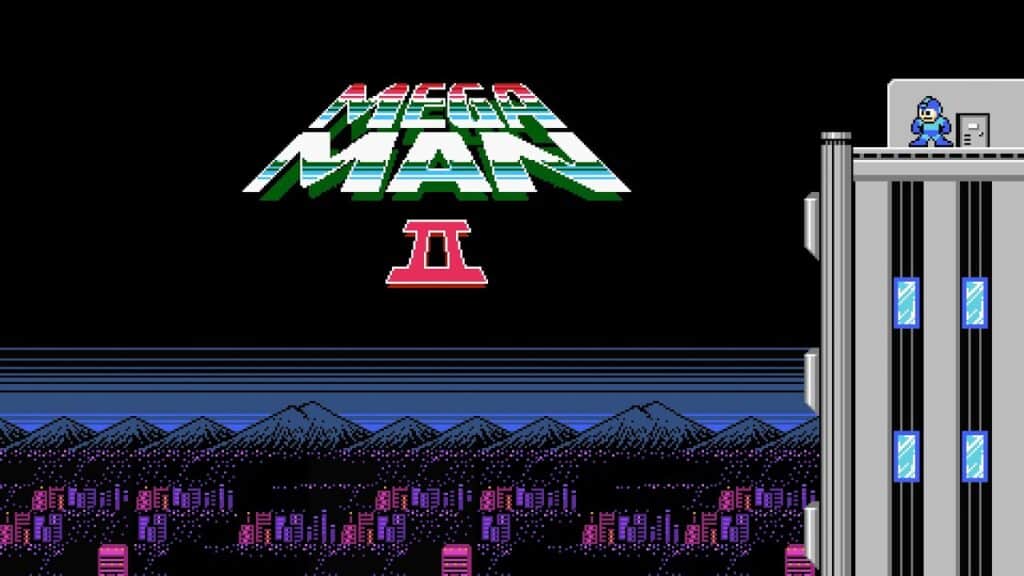
Considered by many fans as the high point of the Mega Man series, this NES classic refined the run-and-gun formula of the 1987 original with better graphics, music, and level design. Players could tackle the eight Robot Masters in any order – an innovation at the time – and then wield the bosses’ weapons, a mechanic that inspired many games after. Mega Man 2 is often regarded as one of the best NES games ever made, thanks to its tight controls and memorable 8-bit sprite bosses . It also has an all-time great chiptune soundtrack. The blue bomber’s success in Mega Man 2 cemented Capcom’s place in gaming history and showed that challenging gameplay and pixel art graphics could yield an enduring franchise.
1990s: 16-Bit & 32-Bit Retro Revolution
In the 1990s, pixel art evolved with 16-bit consoles (like SNES and Genesis) and advanced arcade hardware. This era produced some of the most beloved games of all time, blending richer sprite graphics with deeper gameplay. Here are the top pixel games of the ’90s that achieved massive popularity and cult status:
The Legend of Zelda: A Link to the Past (1991)
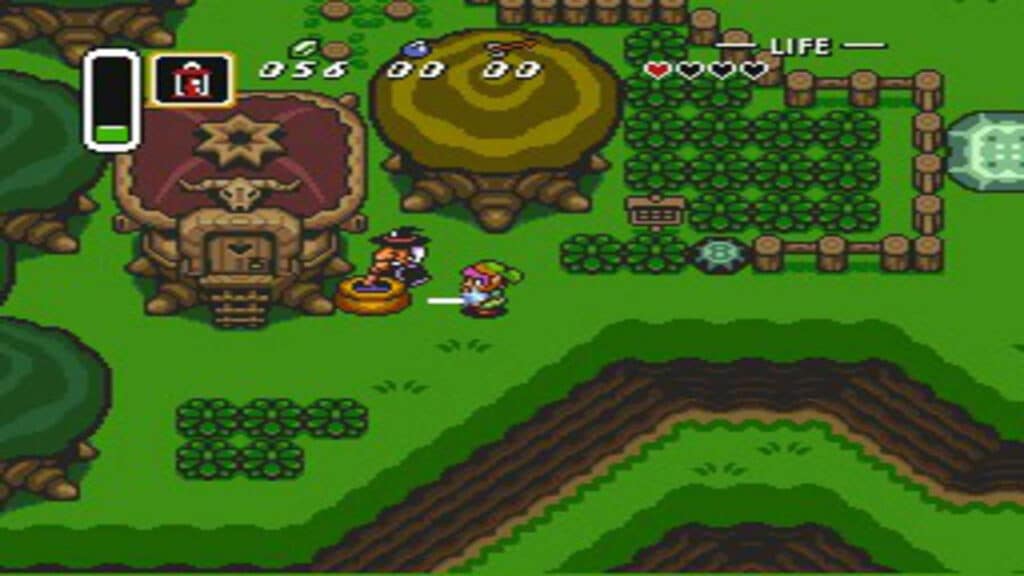
Often cited as one of the greatest games of all time, A Link to the Past brought the Zelda formula to the 16-bit Super NES with gorgeous top-down pixel art. Hyrule came alive with vibrant sprites and a memorable overworld/underworld dual map. The game’s design – filled with puzzles, secret items, and unforgettable dungeons – influenced action-adventure games for decades. It sold millions on SNES and introduced many series staples. Even today, indie developers emulate Link to the Past’s balance of exploration and storytelling in a retro aesthetic. If Zelda on NES was groundbreaking, A Link to the Past was the perfection of that retro formula.
Street Fighter II (1991)
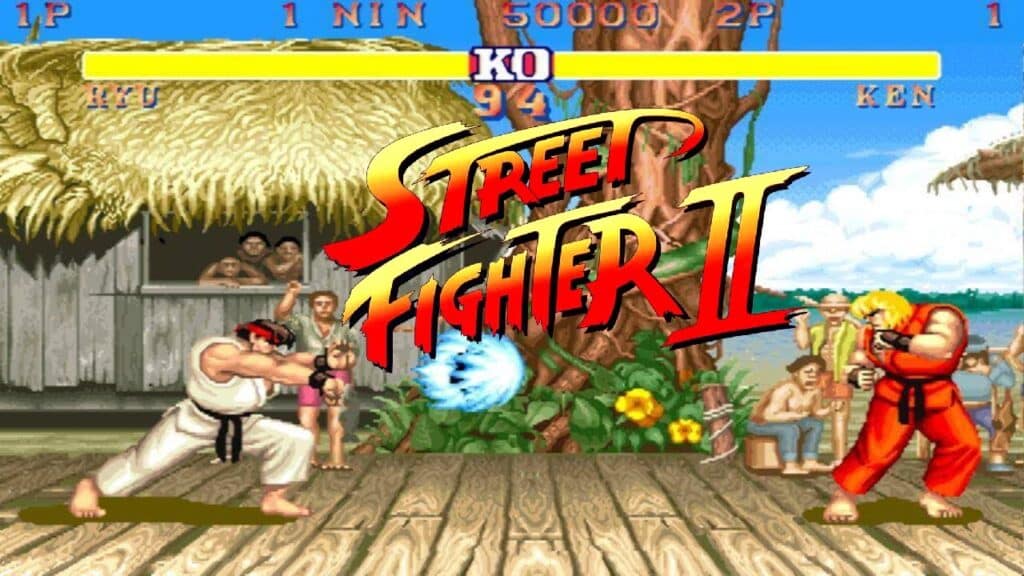
The arcade fighting game that kicked off the 1990s fighting game boom. Featuring larger-than-life pixel art characters from around the globe, Street Fighter II became a worldwide phenomenon in arcades and on the SNES/Genesis. Players spent countless quarters mastering Ryu’s Hadouken and Chun-Li’s lightning kicks. By 2017, the game (in all its editions) had generated an estimated $10+ billion in revenue – a testament to its enduring popularity . Its fast, competitive gameplay essentially created the fighting game community. The detailed sprite animations and stage backgrounds set a new benchmark for 2D art. Street Fighter II’s influence is immeasurable: it spawned numerous sequels, imitators, and a lasting esports scene.
Sonic the Hedgehog (1991)
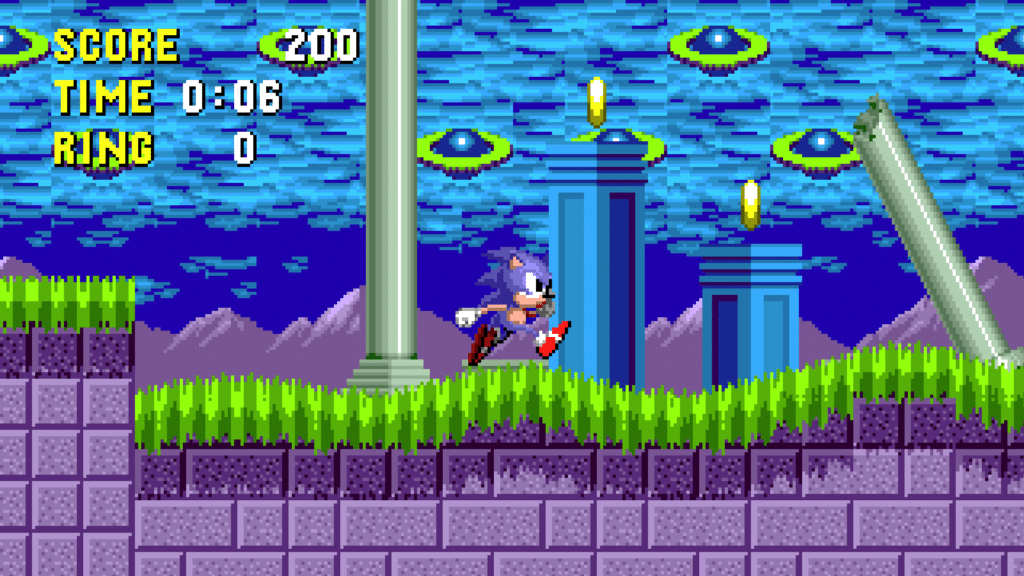
Sega’s 16-bit answer to Mario, Sonic introduced a cool blue mascot and emphasized speed like no platformer before it. Its looping pixel art landscapes (Green Hill Zone, anyone?) and blast-processing-fueled sense of motion were mind-blowing in 1991. Sonic the Hedgehog helped the Sega Genesis surge in popularity, with the game selling over 15 million copies (many bundled with the console) . Sonic’s edgy attitude and vibrant sprite animations captured the spirit of the ’90s. The success of this game made Sonic a household name and gave Nintendo its first real competition. Decades later, the Sonic franchise is still going strong, proving the lasting appeal of a well-designed pixel platformer.
Chrono Trigger (1995)
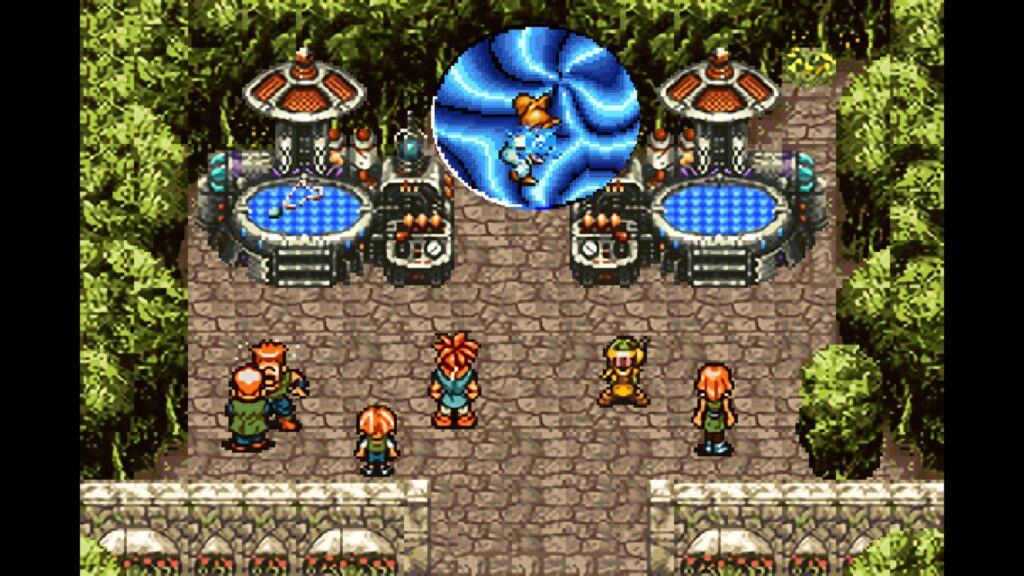
A 16-bit JRPG masterpiece from Square that many consider the pinnacle of the genre. Chrono Trigger featured beautiful pixel art visuals (with character designs by Dragon Ball’s Akira Toriyama), a time-traveling storyline with multiple endings, and an innovative turn-based battle system with team combo attacks. It was developed by a “dream team” of JRPG talent and it shows – the game outshone even its illustrious peers (Final Fantasy VI, Dragon Quest) in the eyes of many. In fact, Chrono Trigger landed the number 3 spot on GamesRadar’s list of the best games of all time . Though it wasn’t the top seller of its era, its critical acclaim and fan adoration have grown over the years – it’s often cited as one of the greatest video games ever made. Modern homages like Chrono Cross, Radiant Historia, and Sea of Stars owe a huge debt to Chrono Trigger’s design and storytelling.
Pokémon Red/Blue (1996)
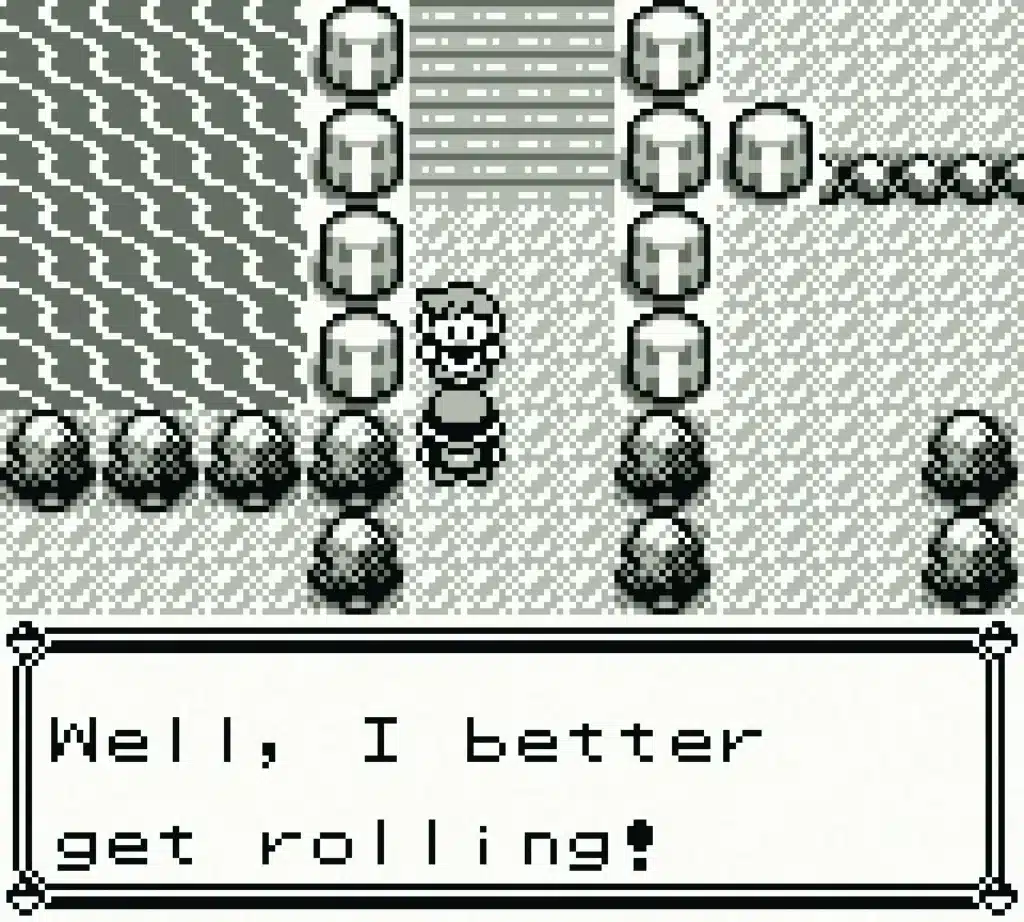
The Game Boy titles that sparked “Poké-mania” and launched the largest media franchise in history. Pokémon Red and Blue used simple 8-bit sprites on a greenish screen, yet managed to ignite the imaginations of millions. The addictive premise of collecting 151 creatures and battling/trading with friends was an instant hit. These games sold over 31 million copies worldwide , becoming the best-selling Pokémon games ever and the best-selling Game Boy titles. Beyond sales, Pokémon created a community phenomenon – kids at schoolyards linking their Game Boys to trade pixelated monsters. The series’ core gameplay has remained so beloved that it’s still going strong generations later (with much fancier graphics). It all traces back to the charming pixel art of Red/Blue – who can forget the first time they saw a chubby Pikachu sprite or a menacing ASCII-like Ghost in Lavender Town? Pokémon proved that technical limitations could be overcome by creativity and player imagination.
Castlevania: Symphony of the Night (1997)
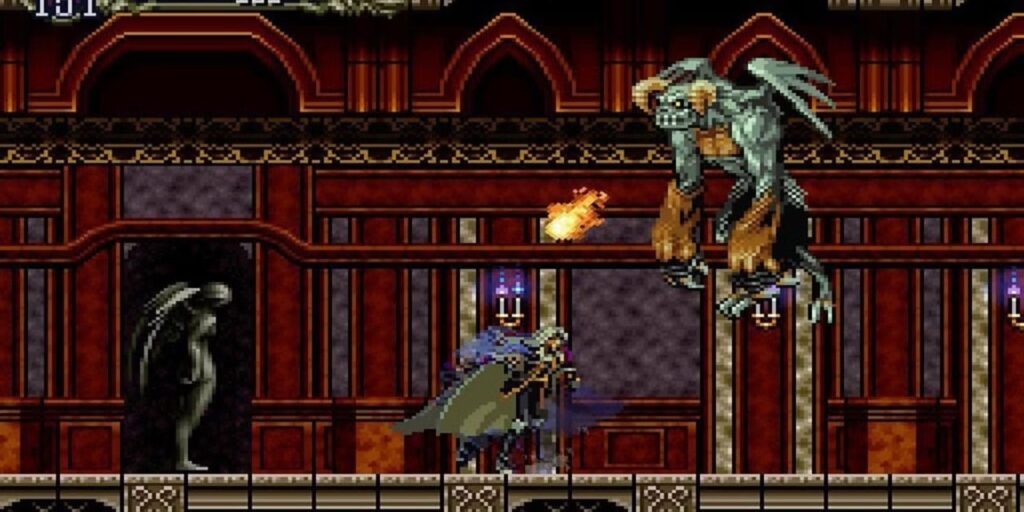
A late ’90s gem that graced the PlayStation with 2D pixel art in an era moving to 3D. Symphony of the Night took the Castlevania series in a new direction, blending platforming with RPG elements and a huge explorable castle. Its lavish gothic pixel art is frightfully superb, filled with animated monsters, detailed backgrounds, and flashy spell effects. The game’s design and exploration-based progression (acquire new abilities to unlock areas) were so influential that the term “Metroidvania” was coined, pairing it with Metroid as paragons of a genre . Though not a massive seller initially, Symphony became a cult classic and is now often ranked among the best Castlevania games ever. It demonstrated that 2D pixel games could still achieve critical greatness on 32-bit consoles known for 3D. Today, many indie titles (like Hollow Knight and Bloodstained) trace their lineage to this game’s masterful design and artwork.
Metal Slug (1996)
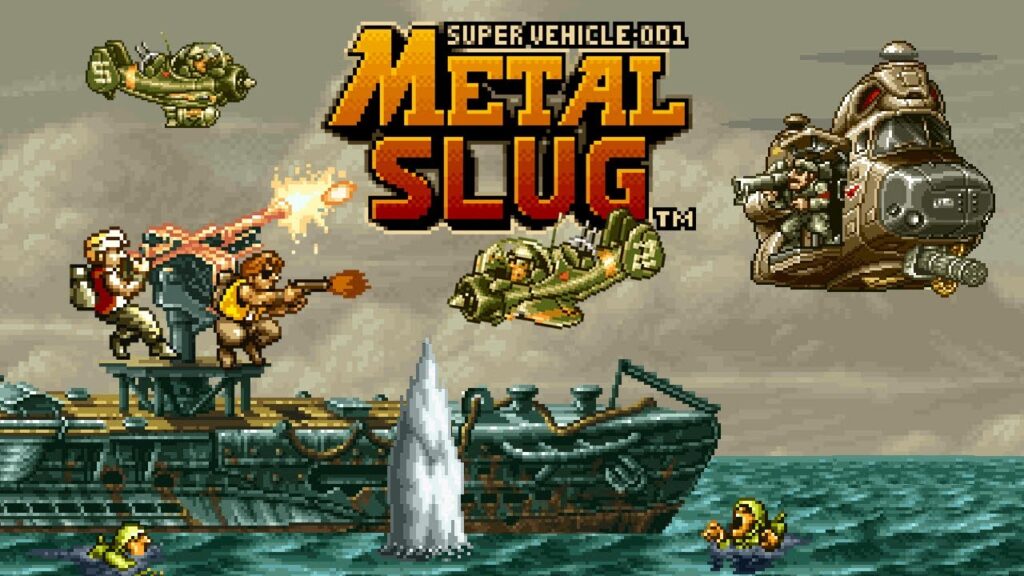
An arcade run-and-gun known for its jaw-dropping pixel art and fluid animations. SNK’s Metal Slug stood out in arcades for its hand-drawn, cartoonishly detailed sprites – from soldiers and tanks to the wobbling jelly-like aliens. The artwork around the franchise is “jaw-dropping to say the least, with beautiful looking sprites [and] amazing sceneries” . But Metal Slug isn’t just a pretty face – its two-player action is frenetic and fun, featuring outrageous weapons and comedic touches (like transforming into a mummy or inflating from too much food). The series’ signature pixel art style remains highly respected; even today, artists study its animation techniques frame by frame. Metal Slug spawned numerous sequels and anthology releases, proving that pure 2D artistry and tight gameplay can have lasting arcade appeal.
(Honorable Mentions from the ’90s: Secret of Mana, Final Fantasy VI, Super Metroid, Street Fighter Alpha 3, Monkey Island 2, and Sonic 3 & Knuckles all left their mark with iconic pixel art – but for brevity, we focused on the absolute top titles.)*
2000s Retro Revival and Handheld Gems
The 2000s saw gaming shift toward 3D, but pixel art survived and thrived in handheld games, fan-favorite RPGs, and early indie projects. This era planted the seeds for the big indie boom to come, proving that the retro aesthetic still had a passionate audience. Top pixel games of the 2000s include:
Cave Story (2004)
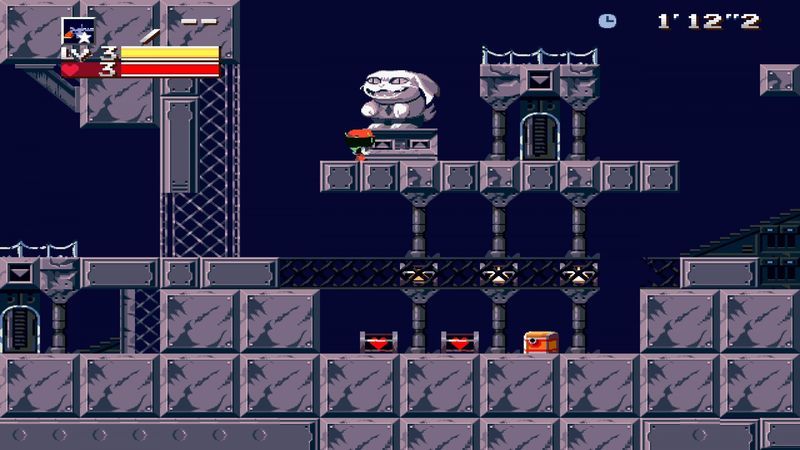
A landmark indie game that exemplified the potential of solo development. Created entirely by one person (Daisuke “Pixel” Amaya) over five years, Cave Story is often called “the quintessential indie game” for its one-man team and huge influence on indie gaming . This free PC platform-adventure delivered tight gameplay reminiscent of Metroid, charming pixel art characters, multiple endings, and a memorable story – and it spread like wildfire online. Many modern developers cite Cave Story as inspiration, as it essentially kicked off the indie retro revival of the mid-2000s. Its success led to ports on Nintendo and Sony platforms, ensuring this pixel gem reached a wider audience.
MapleStory (2003)
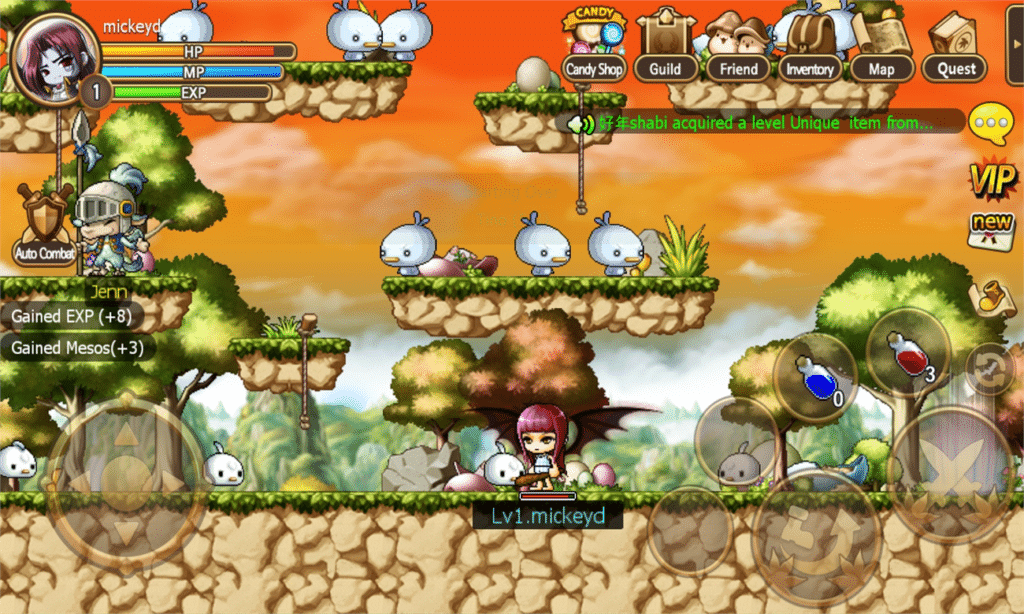
While console games went 3D, PC gamers in the 2000s embraced this colorful 2D MMORPG. MapleStory featured cute, anime-style pixel art avatars exploring a side-scrolling online world. It was free-to-play and hugely successful – by 2020 it had over 180 million registered users worldwide and more than $3 billion in revenue generated . In internet cafes and homes across Asia (and later the West), players spent countless hours grinding mobs and hanging out in MapleStory’s charming pixel towns. The game’s enduring community and frequent updates kept it thriving. MapleStory proved that massively multiplayer games didn’t need cutting-edge 3D graphics to captivate millions – its friendly sprite-based art and social gameplay were more than enough. (Fun fact: MapleStory’s popularity even inspired a short-lived DS spin-off and a planned NFT integration in recent years.)
Mother 3 (2006)

A legendary RPG for the Game Boy Advance that remains officially Japan-only, yet beloved worldwide thanks to fan translation. Mother 3 (the sequel to EarthBound) delivered a poignant, quirky narrative with deceptively simple pixel graphics. The 2D art style might look old-school for 2006, but the game uses it to full emotional effect – from comedic animations to heartbreaking scenes. Famously, dedicated fans released an unofficial English patch in 2008, which was downloaded over 100,000 times in its first week – a testament to the demand and love for this game. Critics and fans often rank Mother 3 as one of the best RPGs on GBA, praising its writing and soundtrack. It has attained mythic status in gaming circles, with calls for an official Western release persisting to this day. The game’s success, despite never leaving Japan, shows how strong storytelling and art direction in a pixel art game can create a global cult classic.
Mega Man 9 (2008)
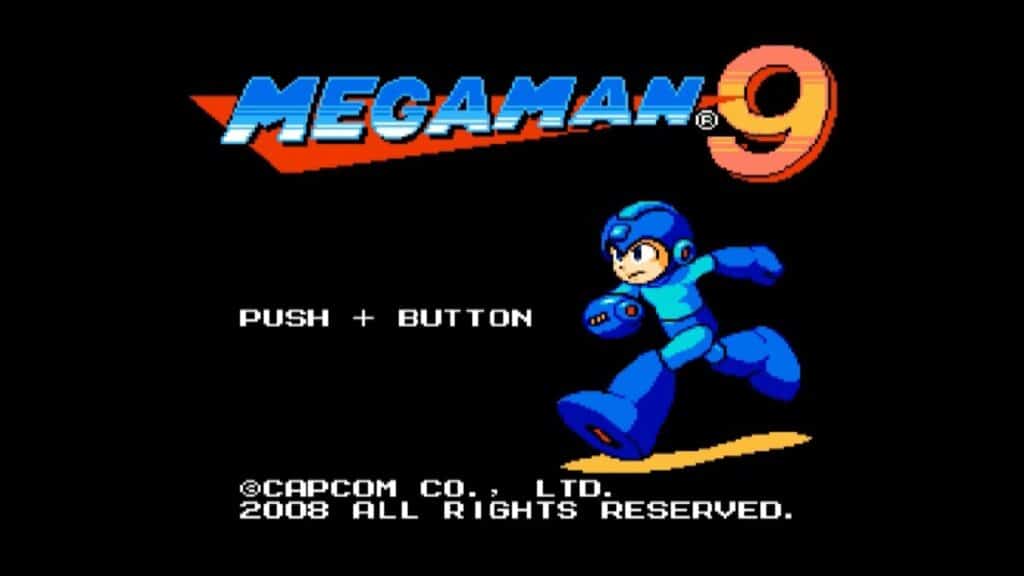
In the late 2000s, Capcom made a bold move that delighted retro gamers: releasing Mega Man 9 as a new title built to look and play exactly like an NES game. After Mega Man had gone 32-bit and 3D, this download-only title went full 8-bit nostalgia – chunky pixel sprites, limited color palettes, and old-school difficulty intact. The throwback worked: fans and critics praised Mega Man 9 for feeling like a lost classic from the late ’80s. It proved the appetite for authentic retro experiences was still strong. By intentionally embracing NES-style graphics and chiptunes, Capcom validated the design ethos that sometimes less is more. The success of Mega Man 9 (and its follow-up Mega Man 10) opened the door for other developers to create new games in old styles, a trend that exploded in the next decade’s indie scene.
(Honorable Mentions from 2000s: Final Fantasy Tactics Advance (2003) and Fire Emblem kept strategic pixels alive on GBA; Advance Wars (2001) proved turn-based military strategy could be cute and addicting; Diablo II (2000) and Warcraft III (2002) delivered hugely popular gameplay using 2D sprites in isometric view, though not typically labeled “pixel art” style; and Phoenix Wright: Ace Attorney (2001) gave us iconic courtroom antics with expressive pixel characters.)*
2010s: Indie Renaissance of Pixel Art
The 2010s saw an explosion of indie games that deliberately employed pixel art, both for nostalgia and artistic expression. Digital distribution, crowdfunding, and tools like GameMaker Studio allowed small teams to create rich experiences with retro aesthetics. Meanwhile, some big hits on Steam and consoles also embraced pixel graphics. This era’s top pixel games achieved enormous sales and critical success, proving pixel art was truly back in style:
Terraria (2011)
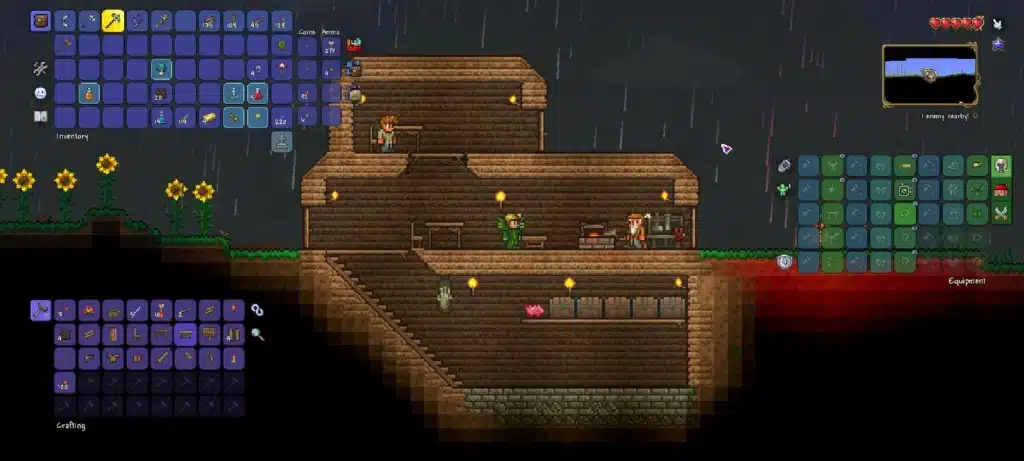
Where to play: https://terraria.org/
What started as a side-scrolling, 2D take on the Minecraft idea became one of the best-selling PC games ever. Terraria drops players into a procedurally generated 2D world teeming with resources, monsters, and secrets – all depicted in simple but charming pixel art. Part sandbox, part action-adventure, it rewards creativity and exploration (you can build elaborate bases or battle massive bosses). Over the years, Terraria grew through constant updates into a colossal game. As of 2024, it had surpassed 58.7 million copies sold across PC, consoles, and mobile , putting it among the top 10 best-selling games in history. On Steam it even achieved the #1 user-rated spot at one point . The sprite-based graphics allow for hundreds of enemy types and biomes with minimal file size, and players often modify the visuals with texture packs. Terraria’s success demonstrated that pixel graphics can deliver virtually endless gameplay depth and a massive community – it’s a true phenomenon that’s still going strong a decade later.
Shovel Knight (2014)
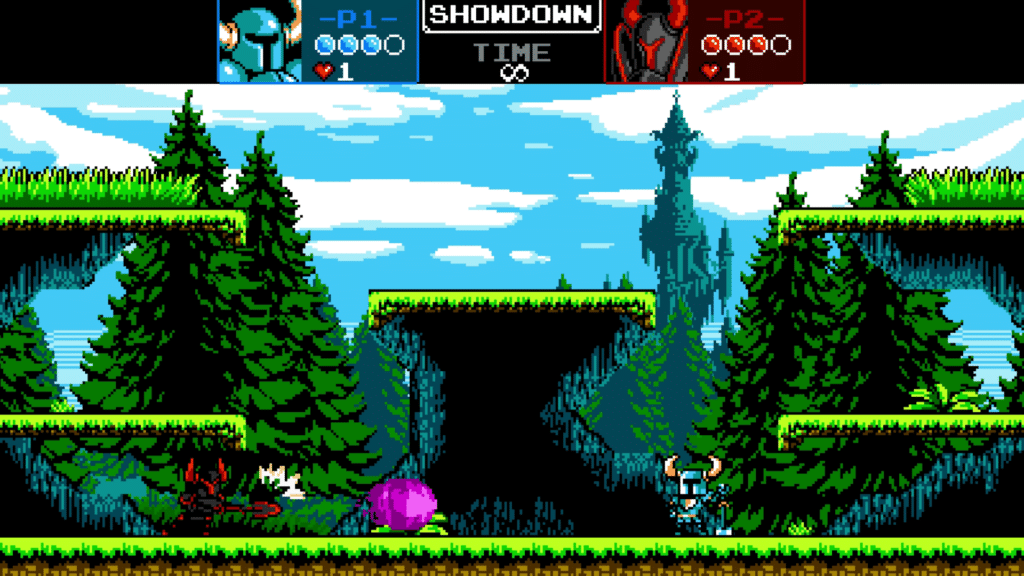
Where to play: https://store.steampowered.com/app/250760/Shovel_Knight_Treasure_Trove/
A breakout indie hit that masterfully resurrected the 8-bit platformer genre. Shovel Knight lovingly recreates the look and feel of an NES action game – down to the retro color palette and a chiptune soundtrack – but with modern design polish. Players control a blue knight armed with a shovel, adventuring through stages that channel Mega Man, DuckTales, and Mario 3 vibes. The game’s tight controls, witty writing, and nostalgia factor earned it critical acclaim and a large fanbase. By its 5th anniversary, Shovel Knight had sold over 2.5 million copies , an impressive feat for an indie platformer. The developers (Yacht Club Games) continued to support it with free expansions, essentially turning it into a full series. Shovel Knight himself became an indie icon, guest-starring in dozens of other games. The success of Shovel Knight proved that a new game could thrive as if it were 1989 all over again – provided it’s crafted with skill and heart.
Undertale (2015)
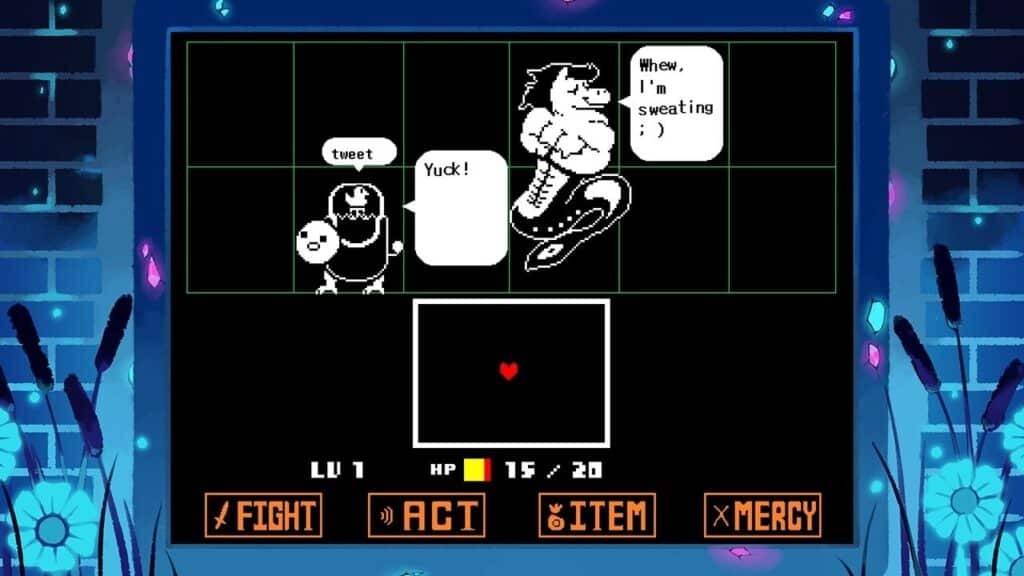
Where to play: https://undertale.com/
A pop culture phenomenon in the indie RPG scene, Undertale charmed players with its retro EarthBound-like graphics and subversive gameplay. Solo-developed by Toby Fox, this game uses minimalist pixel art and quirky character designs to tell a deeply emotional and humorous story that players’ choices genuinely affect. It famously lets you befriend or spare enemies instead of killing them, leading to multiple routes (Pacifist or Genocide) and breaking the fourth wall in clever ways. Undertale’s visuals may be simple, but the character expressions and bullet-hell battle sequences are incredibly inventive within a 2D framework. The game was a runaway success: it sold over 5 million copies and earned numerous Game of the Year awards from media and conventions. Many publications have since listed Undertale among the greatest games ever made – high praise for a game that looks like a throwback to 1994. The community around it (fan art, memes, music covers) was massive, and it spawned an in-development sequel (Deltarune). Undertale showcased how pixel art can convey powerful narrative and attracted a new generation of gamers to the retro RPG style.
Stardew Valley (2016)
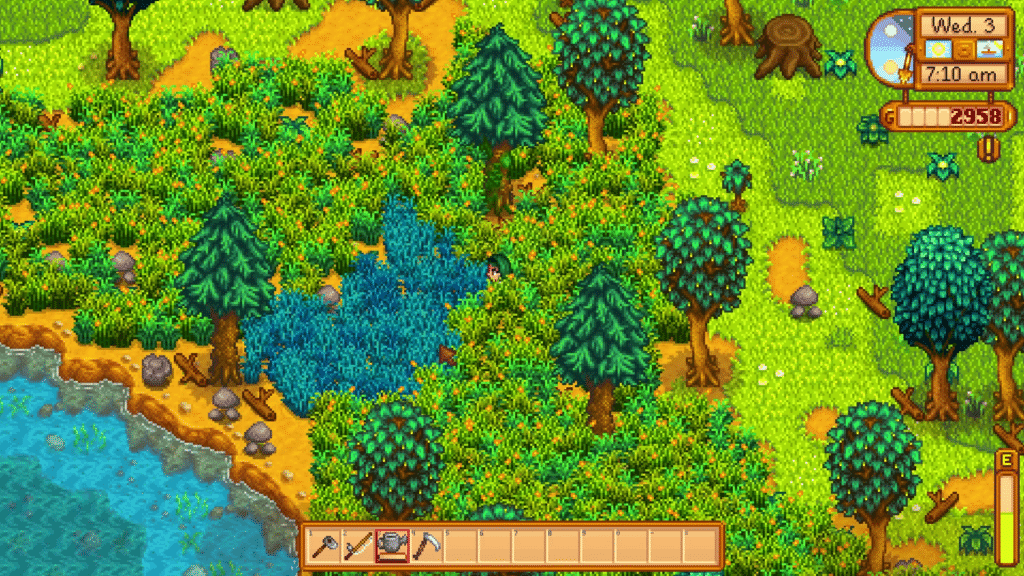
Where to play: https://www.stardewvalley.net/
If any indie game can rival the popularity of the biggest AAA titles, it’s Stardew Valley. This farming/life simulation RPG, developed by one person (Eric Barone), took inspiration from the pixelated Harvest Moon series and then expanded on it tremendously. Players rebuild a farm, form relationships with townsfolk, explore mines, and more – all rendered in endearing 2D pixel art. Stardew Valley struck a chord for its relaxing yet addictive gameplay. Critically acclaimed, it became a word-of-mouth best-seller. By December 2024, Stardew Valley had sold over 41 million copies across all platforms (with 26M on PC alone) – an astronomical number that places it among the best-selling games ever, indie or not. It’s also one of Steam’s top-rated games. The pixel art style allowed Barone to single-handedly create a vast amount of content, from seasonal town designs to dozens of crop types and animals. Stardew’s massive success reinvigorated the farming sim genre and proved that beautiful pixel aesthetics coupled with deep, comforting gameplay can yield a worldwide mega-hit (even on mobile, where Stardew Valley also became a top paid app).
Octopath Traveler (2018)
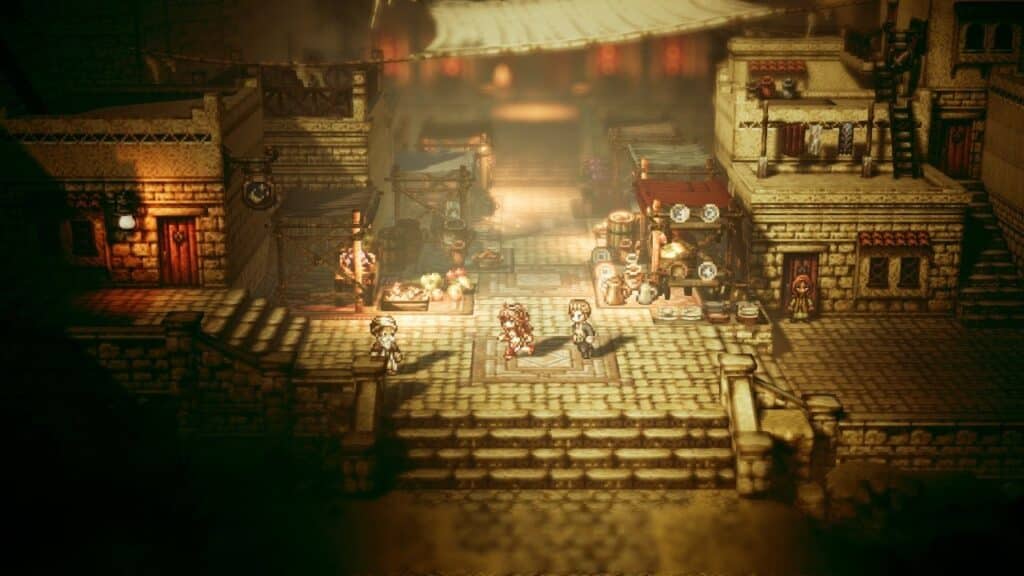
Where to play: https://store.steampowered.com/app/921570/OCTOPATH_TRAVELER/
A modern JRPG that showed HD-2D graphics could marry old-school pixel sprites with new effects. Developed by Square Enix, Octopath Traveler presents its characters and monsters as high-quality 2D pixel art in a 3D diorama-like world with dynamic lighting and depth of field. The result is a stunning visual style that feels retro and modern at once – often described as playing a living diorama or pop-up book. Beyond graphics, the game itself was praised for its deep battle system and eight interwoven storylines. Octopath was also a commercial success, especially on the Nintendo Switch – it sold over 2.5 million copies by 2021 (spawning a sequel in 2023). The game’s art style was so well-received that Square committed to more “HD-2D” projects (like Triangle Strategy and Live A Live HD). Octopath Traveler demonstrated how 16-bit JRPG nostalgia could be elevated for a new generation. It even brought legendary Chrono Trigger composer Yasunori Mitsuda on board for some musical contributions, emphasizing its role as a spiritual love letter to the 1990s classics . The term “HD-2D” has since become synonymous with this blending of pixel art and modern tech, largely thanks to Octopath’s impact.
Celeste (2018)
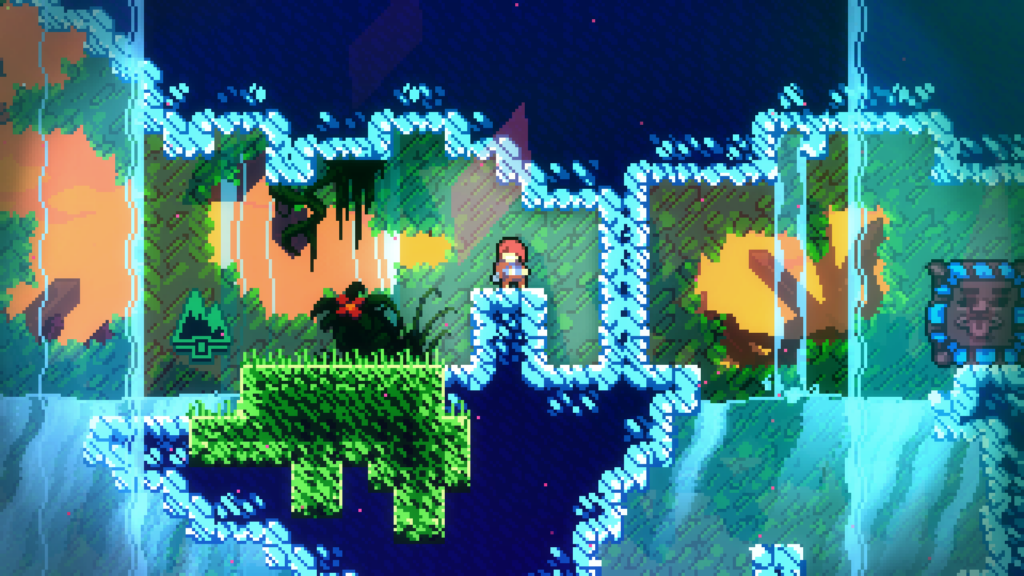
Where to play: https://store.steampowered.com/app/504230/Celeste/
A critically acclaimed indie platformer that combined brutally challenging gameplay with a heartfelt story about mental health and perseverance. Celeste employs a lovely pixel art style for its characters and mountain environments, proving that small sprites can convey big emotions. The controls are tight and precise – crucial for a difficulty level that invites comparison to Super Meat Boy – yet frequent checkpoints encourage players to keep trying. Besides its platforming pedigree, Celeste won praise for its inclusive narrative and memorable soundtrack. It racked up awards, notably winning Best Independent Game at The Game Awards 2018 (and even being nominated for the overall Game of the Year, a rarity for a pixel art indie). The game sold well over a million copies, and its developer continued to update it with a free ultra-hard chapter. Celeste stands as proof that pixel art games can deliver modern, relevant storytelling and compete at the highest levels of industry recognition. Its mix of nostalgic aesthetics with contemporary themes resonated deeply with players and critics alike.
The Binding of Isaac: Rebirth (2014)
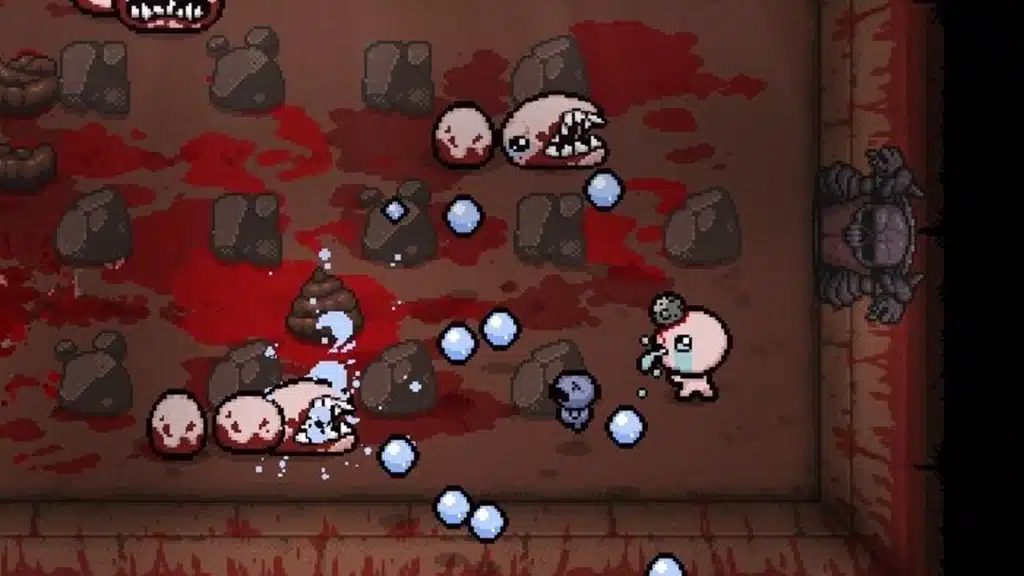
Where to play: https://store.steampowered.com/app/250900/The_Binding_of_Isaac_Rebirth/
An influential roguelike dungeon-crawler that helped kick off a craze for procedurally generated, replayable indie games. The Binding of Isaac (originally released in 2011 with Flash graphics, then remade in 2014 with improved pixel art) puts the player in randomly generated dungeons inspired by Zelda, with twin-stick shooter mechanics. Its grotesque-yet-cute 2D art style and dark humor made it stand out, as did the sheer variety of power-ups that can stack to change your character in wild ways. Isaac became a staple on Steam and consoles – it has 97% positive user reviews from hundreds of thousands of players and is often cited as one of the top indie games of the decade. The game’s endless replayability and expansion packs (Afterbirth, etc.) kept it popular for years. It also popularized the term “rogue-lite”. Many later hits (Enter the Gungeon, Dead Cells, Hades) owe a debt to Binding of Isaac’s template of randomized runs and pixel-art mayhem. Few games about crying cartoon babies and biblical allegories have achieved such success, but Isaac pulled it off with creative gameplay and distinctive gross-but-charming pixel art.
(Other 2010s notables: Minecraft (2011) deserves a mention – while technically 3D voxel, its blocky pixelated aesthetic made it the best-selling game ever at 238 million copies, and it heavily inspired games like Terraria. We focused on 2D pixel art here, but Minecraft’s influence on the resurgence of retro-style graphics is undeniable. Additionally, Hotline Miami (2012) brought stylish ultraviolence via neon pixel visuals and an iconic soundtrack, becoming a cult hit. Fez (2012) cleverly merged 2D pixel art with 3D perspective shifts, winning awards for innovation. Hyper Light Drifter (2016) offered sleek pixel art and atmospheric storytelling. And Hollow Knight (2017), though more hand-drawn in style, carried the Metroidvania torch and is often mentioned alongside modern pixel-art indies.)*
2020s: Modern Pixel Masterpieces
In the 2020s, pixel art games continue to flourish, now often enhanced by modern engines and creative twists. From viral indie sensations to big studio projects, the retro renaissance shows no signs of slowing. These recent titles prove that pixel graphics can still feel fresh and draw huge audiences:
Vampire Survivors (2022)
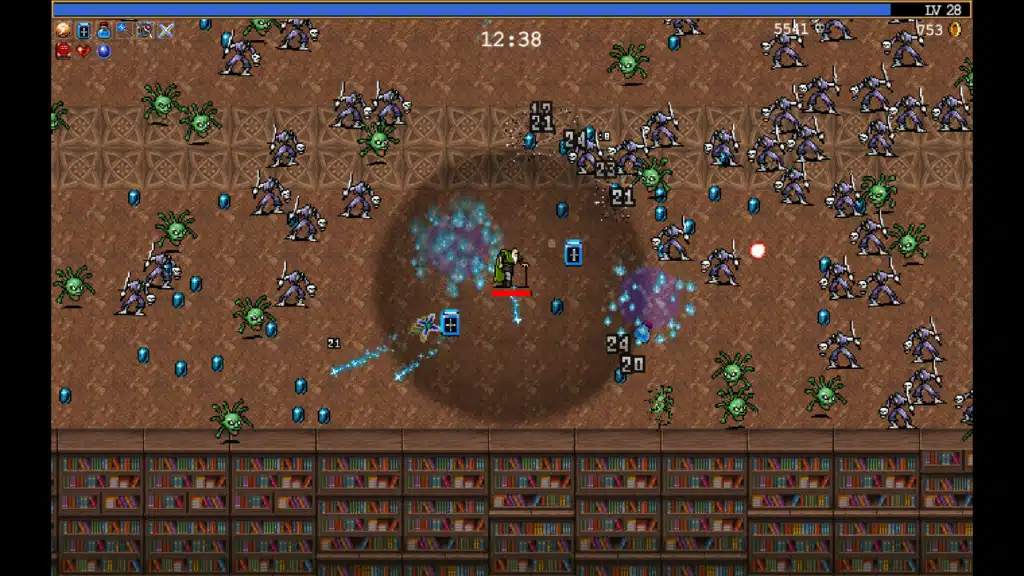
Where to play: https://store.steampowered.com/app/1794680/Vampire_Survivors/
An unexpected smash hit that reminded everyone you don’t need fancy graphics to be addictive. Vampire Survivors uses extremely minimalist pixel art (reminiscent of 8-bit Castlevania enemies) and simple effects, but its gameplay hook – an auto-attacking survival RPG where you mow down thousands of monsters – made it a viral sensation. It took Steam and mobile by storm with its budget price and one-more-run appeal. Despite the low-fi visuals, the on-screen chaos becomes beautiful in its own way when you’re surrounded by swarms of bats and skeletons exploding into pixels. The game garnered critical praise and even won major awards; it snagged the Best Game award at the BAFTA Games Awards (Britain’s equivalent of the Oscars) in 2023 , a huge honor for such a retro-looking title. It also won a Golden Joystick for Breakthrough Game . Vampire Survivors’ runaway success (millions of downloads within months) has already spawned many imitators in the “horde survival” genre. Its triumph illustrates that innovative gameplay – paired with nostalgic pixel monster sprites and old-school gothic vibes – can captivate the masses even in an era of photorealistic graphics.
Eastward (2021)
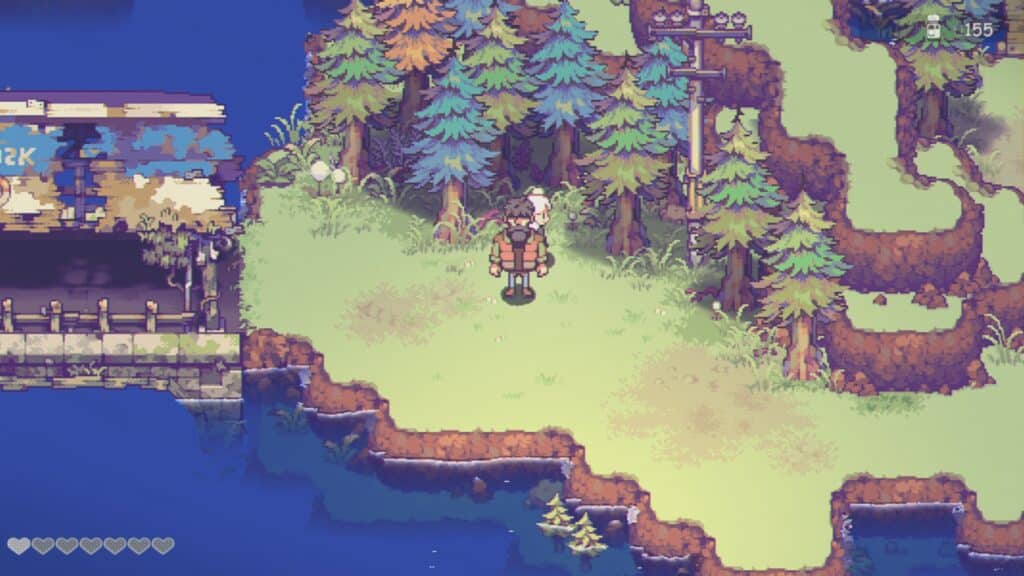
Where to play: https://store.steampowered.com/app/977880/Eastward/
A beautiful indie RPG/adventure that serves as a love letter to 16-bit classics. Eastward’s claim to fame is its stunning high-bit pixel art: every scene is richly detailed, from bustling towns to monster-filled ruins, with fluid animations and lighting that give it a modern touch. Reviewers and players were in awe of the art; one write-up stated it has “some of the most beautiful pixel art [they] have ever seen. Ever.” . The game follows a dual-protagonist story (a digger and a mysterious girl) through a post-apocalyptic world, blending Zelda-like dungeon puzzles with EarthBound-esque quirky towns. Eastward was highly anticipated and largely delivered on the hype, earning praise for its visuals, music, and characters. While not a sales juggernaut, it solidified Pixpil (the developer) as pixel art virtuosos. The level of detail in Eastward’s sprite work – from flickering neon signs to subtleties in character expressions – shows how far modern pixel art has evolved compared to the blocky sprites of the ’80s. It’s a feast for the eyes for any pixel fan.
Sea of Stars (2023)
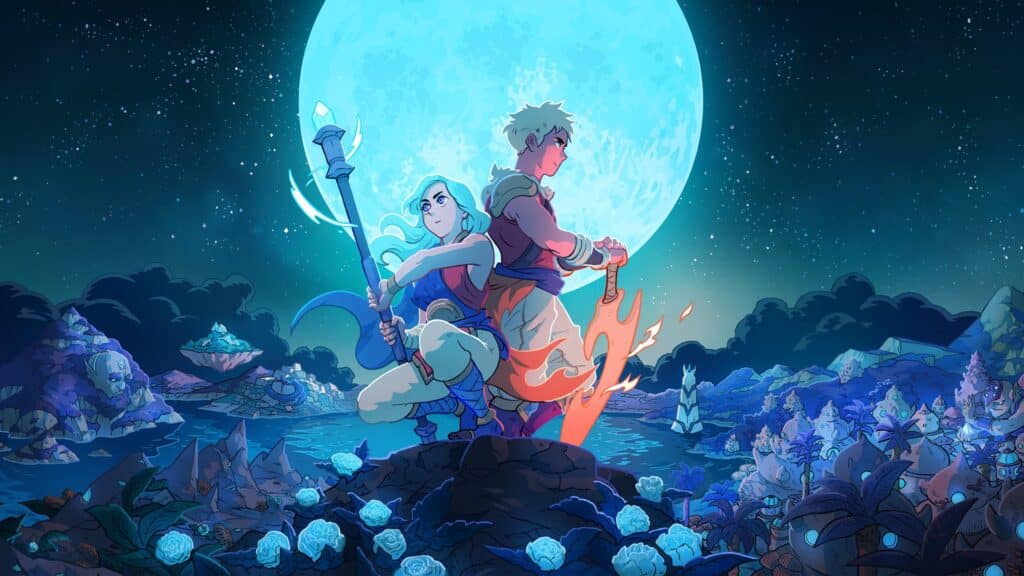
Where to play: https://seaofstarsgame.co/
A modern turn-based RPG that deliberately channels the spirit of Chrono Trigger and other 90s JRPGs, while adding its own polish. Sea of Stars features lovingly crafted pixel art environments and characters, with a vibrant color palette and intricate background details (from shimmering water to rotating day-night cycles). It basically asks: what if the SNES era had a game made with today’s knowledge? The result is both nostalgic and new. Fittingly, Sea of Stars even brought on Chrono Trigger’s composer, Yasunori Mitsuda, as a guest composer to enhance that authentic retro feel . Critics lauded the game’s visuals and classic yet refined gameplay – it feels like a lost RPG from 1995, in the best way. Upon release, it quickly sold a quarter-million copies in its launch week (despite also being on Game Pass) and received numerous accolades. For fans of pixel art, Sea of Stars is a showcase of top-tier sprite animation and design in the modern age. It demonstrates that the turn-based RPG genre still has plenty of life when combined with gorgeous pixel artistry and a heartfelt tribute to the past.
Blasphemous (2019)
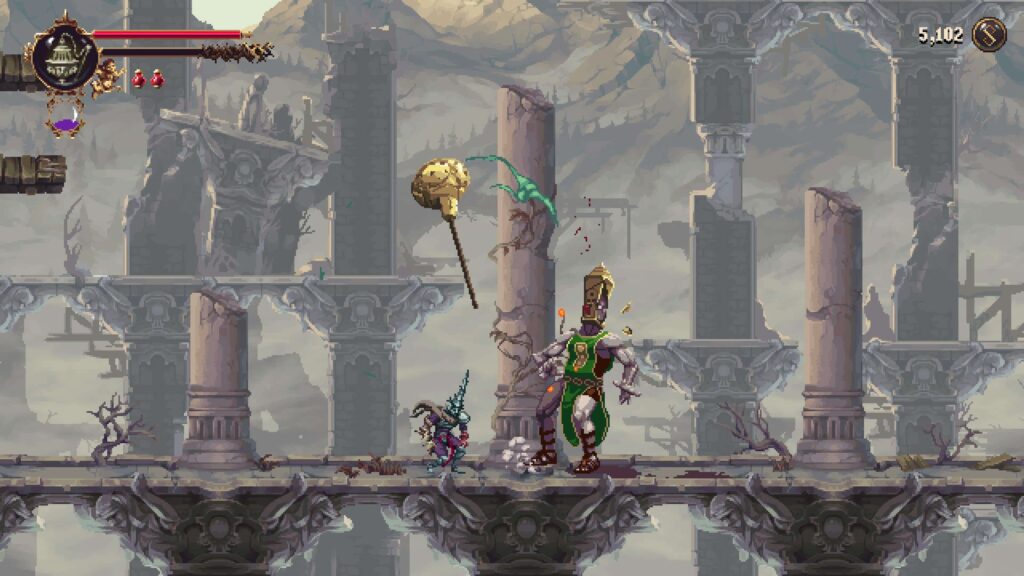
Where to play: https://store.steampowered.com/app/774361/Blasphemous/
(We’ll count this under “2020s” influence, as its popularity carried into the decade and a sequel in 2023). Blasphemous is a brutal Metroidvania that stands out for its dark, striking pixel visuals. Set in a nightmarish, gothic depiction of a religiously-inspired world, the game’s art is both grotesque and beautiful. The developers (The Game Kitchen) used detailed, hand-crafted pixel art to create a distinct aesthetic – intricate sprites and backgrounds that bring the cursed land of Cvstodia to life . From the fluid animation of blood splatters to the ornate design of the Penitent One’s strange helmet, Blasphemous delivers some of the most impressive pixel art animation seen in an action game. It’s often described as “a pixel art Dark Souls” for its punishing combat and lore-heavy storytelling. The game gained a strong following, and players praised how the art style enhanced the oppressive atmosphere. Blasphemous shows that pixel art can be used for more than cute or nostalgic vibes – it can also effectively convey horror, gore, and sublime dread in a way that’s uniquely impactful.
Pizza Tower (2023)
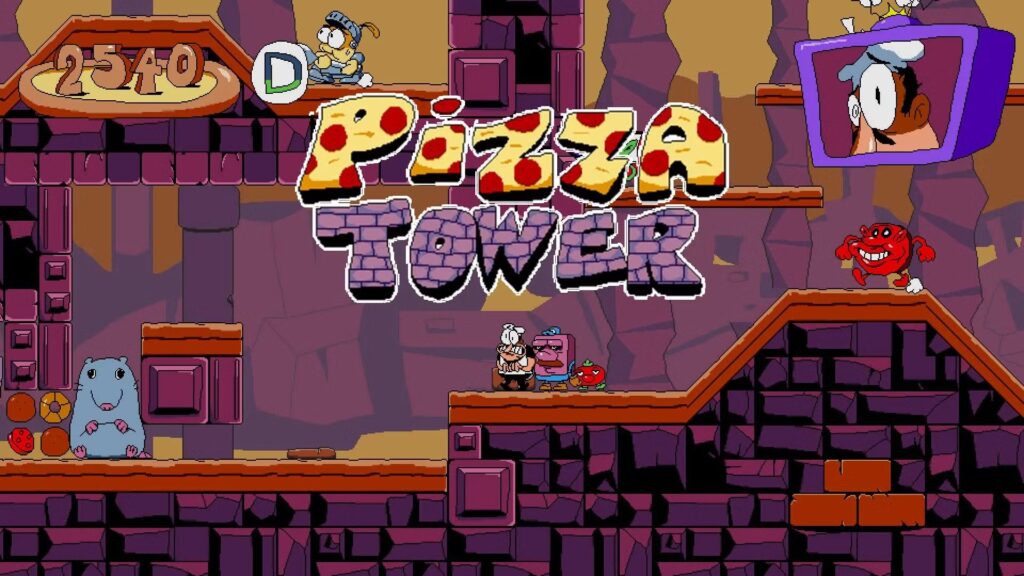
Where to play: https://store.steampowered.com/app/2231450/Pizza_Tower/
A wild, wacky indie platformer that channels the spirit of ’90s cartoons through high-energy pixel art. Pizza Tower draws clear inspiration from the Wario Land series, but cranks everything up to 11. You play as Peppino Spaghetti, an Italian chef, dashing and smashing through levels in a quest to destroy an evil pizza tower. The game’s cartoonish, high-resolution pixel art style is actually inspired by shows like SpongeBob SquarePants and the creator’s love of Franco-Belgian comics . The animations are outrageously expressive – Peppino’s face contorts in panic or rage, enemies morph in comical ways when defeated – giving the game a manic, hand-drawn feel even though it’s all pixel sprites. Pizza Tower was a hit with platformer aficionados for its tight gameplay and over-the-top presentation; it gained a cult following and excellent user reviews. It proves that pixel art can be zany and truly animated in a way that rivals traditional animation. With its punky art style and lightning-fast gameplay, Pizza Tower is often cited as one of the freshest 2D platformers in recent years, showing the versatility of the pixel medium.
Dave the Diver (2023)
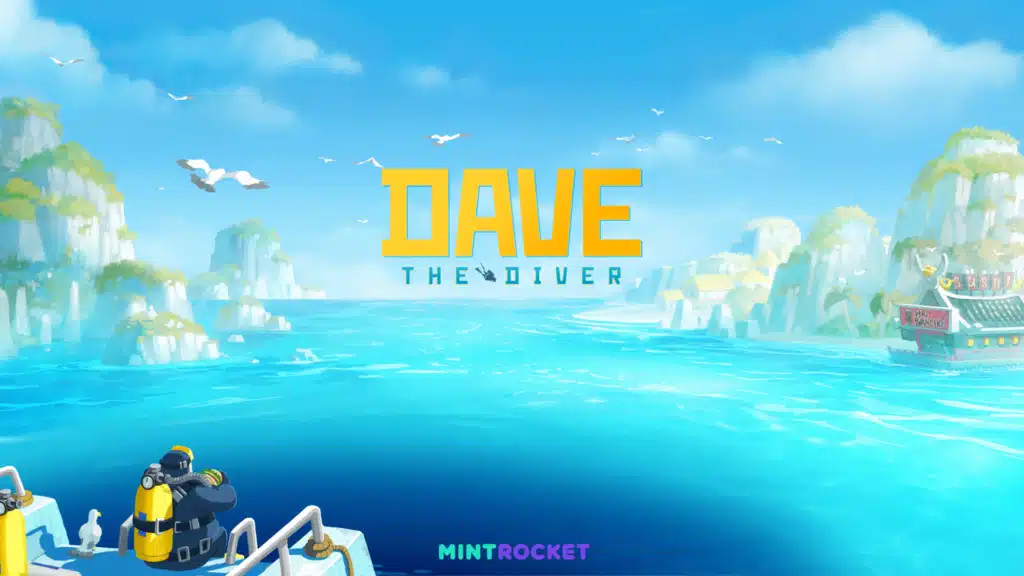
Where to play: https://store.steampowered.com/app/1868140/DAVE_THE_DIVER/
Part pixel-art adventure, part restaurant management, this genre-blending indie title took the gaming world by surprise. Dave the Diver uses a mix of 3D environments with chunky pixelated character sprites for a unique visual style (think 2D characters exploring a 3D-ish ocean). As Dave, you dive for fish by day in beautiful underwater pixel scenes and serve sushi by night, encountering all manner of quirky characters. The gameplay is an addictive loop of exploration, collection, and tycoon-style upgrades – and it hooked players en masse. Within just 10 days of launch, Dave the Diver sold over a million copies on Steam and climbed to the top of sales charts, even hitting ~98,000 concurrent players and 66,000 Twitch viewers during its debut . It maintains an “Overwhelmingly Positive” rating on Steam, indicating how beloved it is . The pixel art contributes greatly to its charm: the animation of sea creatures (and Dave’s humorous reactions to them) gives the game a lighthearted, retro vibe that complements its modern gameplay depth. Dave the Diver shows that even in 2023, a game with pixel-based characters can capture players’ hearts and become a breakout hit – especially when backed by strong mechanics and a bit of pixelated humor (who can resist a cutscene of Dave karate-chopping a giant tuna set to dramatic pixel art cinematography?).
Soulbound (2025)
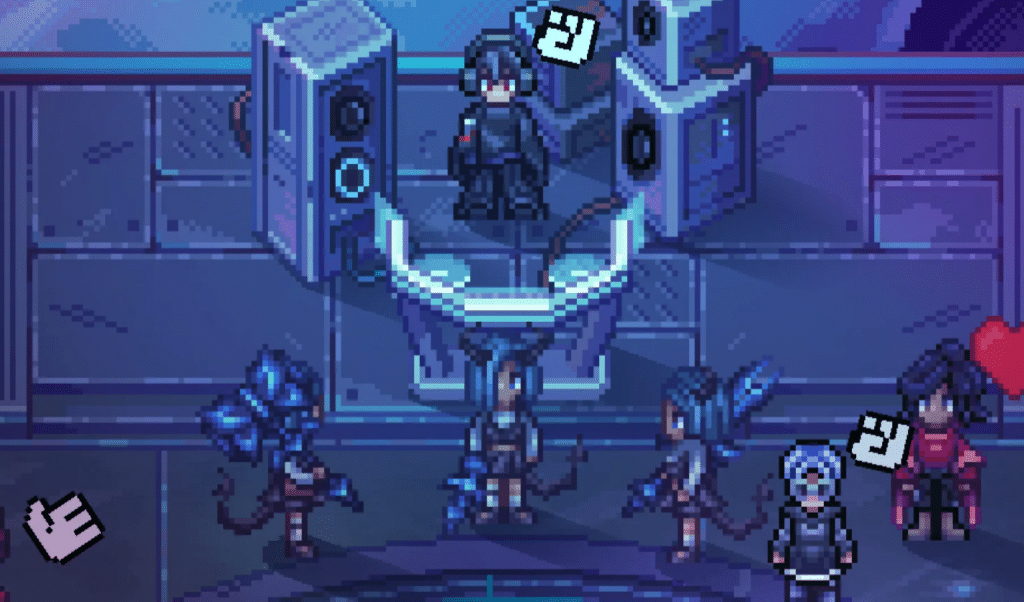
Where to play: https://soulbound.game/
A genre-defying rogue-lite MMORPG that brings the nostalgic charm of pixel art games into a living, breathing online world. Built directly inside Discord, it transforms your server into a dynamic, ever-changing dungeon where every decision echoes through a shared, story-driven universe. Explore handcrafted pixel worlds, battle alongside friends in real-time, and shape your guild’s legacy with every quest you complete. With rich storytelling, diverse biomes, and strategic combat, Soulbound delivers the depth of a traditional MMO in the tight-knit format of your favorite community platform.
(Honorable Mentions of 2020s: Huntdown (2020) delivered awesome 16-bit style run-and-gun action with a synthwave twist; Cyber Shadow (2021) offered Ninja Gaiden-esque platforming in crisp NES-style pixels; TMNT: Shredder’s Revenge (2022) revived the ’90s arcade brawler with excellent sprite work and was a blast in co-op; Octopath Traveler II (2023) continued HD-2D excellence with even more refined visuals; A Short Hike (2019), while technically 3D, used a pixelated filter to achieve a cozy retro look and earned a 99% positive Steam score ; and Minecraft… well, it’s in a league of its own but certainly kept pixel aesthetics in the mainstream conversation.)
In conclusion, pixel art games have proven their enduring appeal across every decade of gaming. Whether it’s the pure 8-bit nostalgia of a classic arcade title or the artful fusion of old and new in a modern indie, the best pixel games deliver gameplay and artistry that transcend their resolution. From arcade legends like Pac-Man and Donkey Kong, to 16-bit masterpieces like Chrono Trigger and Street Fighter II, to the indie revolution brought by Stardew Valley, Undertale, and Celeste, and the ongoing innovations of titles like Vampire Survivors and Sea of Stars – each of these 30 games demonstrates the power of the pixel. They collectively show that retro visuals are not a limitation but an art style of its own, one that continues to evolve and captivate players in the age of 4K graphics.
If you’re looking for the top pixel art games to play, start with any title on this list and you’ll see why these games (spanning 5 console generations and beyond) have earned legendary status. Happy gaming, and long live the pixels!
